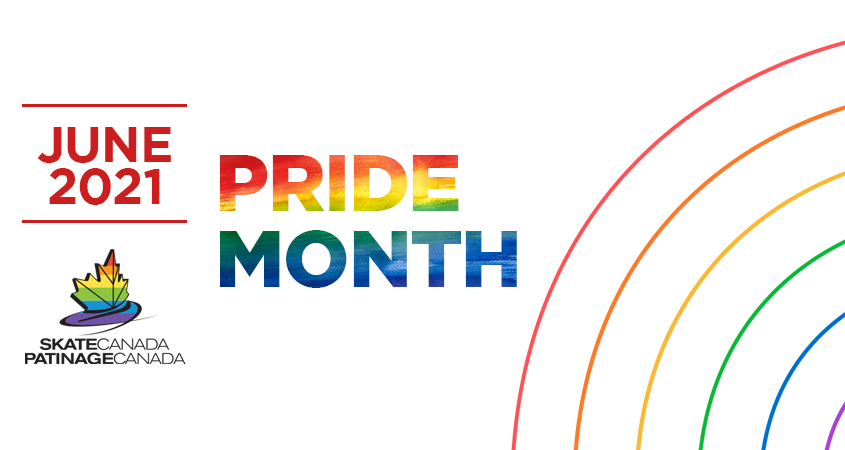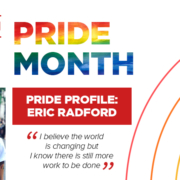Eight Ways to Make Skating More Inclusive to the 2SLGBTQIA+ Community
June is Pride Month and an opportunity to highlight and celebrate the 2SLGBTQIA+ community. Skate Canada has done and is continuing to do substantive work in relation to 2SLGBTQIA+ inclusion but we know there remains critical inclusion work to be done moving forward in relation to race, ethnicity, Indigeneity, religion, class, size, and ability, and their intersections.
As part of that work, Skate Canada would like to share the following ways to make skating more inclusive to the 2SLGBTQIA+ community. We would like to thank Dr. William Bridel for putting this information together for us and for the continued work he has done to educate and provide guidance as we strive to achieve an inclusive environment for all.
- Listen to 2SLGBTQIA+ members and persons in your community with empathy, respect, and compassion. Their stories are valid and important sources of information and knowledge!
- Educate yourself, educate others. There are many excellent resources available that provide general and sport-specific information on 2SLGBTQIA+ inclusion that are available through Skate Canada’s website at https://skatecanada.ca/safe-sport/. As one specific example, encourage coaches and volunteers to participate in a Canadian Women & Sport Leading the Way webinar or book a workshop for your club, region, or Section (https://womenandsport.ca/).
- Think critically about your own ideas about gender, gender identity, and gender expression: are some of your taken-for-granted ideas about femininity and masculinity impacting people in your life? For example, as an official, are you familiar with the revised costume rules in the sport? How will you be supportive of choices that skaters, coaches, and/or their parents/guardians make?
- Don’t make assumptions about people’s identities or people’s relationships and never “out” anyone; someone’s story about their gender identity or sexuality is their own to share, unless they have given you explicit permission to speak about them to others.
- Commit to using inclusive language and images. For example, honour people’s chosen pronouns and names. When creating documents use, for example, “they” instead of “he/she” and “skaters” instead of gender-specific terms. You can use words such as “folks” or “everyone” in place of “Ladies and Gentlemen” and groups should never be addressed as “guys”. If you need to ask for information about athletes’ parents, use the term Parent/Guardian and provide space for two or more names to be listed; avoid using the terms mother and father as families come in all shapes and sizes!
- Display 2SLGBTQIA+ symbols such as the Canadian Women & Sport “I Support Positive Space in Sport” poster (https://womenandsport.ca/) or Skate Canada Pride stickers on a club bulletin board, a website, the window of a skating office or coach’s room, or on your person (e.g., coffee mug, water bottle, skate bag). Why not participate in local Pride parades as a club or Section? Representation matters!
- Address dressing room/locker room requests and questions. Best practice guidelines are available for sport from the Canadian Centre for Ethics in Sport (www.cces.ca). Skating-specific recommendations are in development and will be made available on Skate Canada’s website when finalized.
- Collaborate with other organizations in your community to offer learning opportunities to your members (e.g., PFLAG, Pride organizations, anti-bullying organizations, schools, the Canadian Olympic Committee’s #OneTeam Program, You Can Play, etc.)
In general, work to create inclusive space before you know you need to. Be willing to be brave: challenge others when they say something 2SLGBTQIA+ phobic or you read it on social media. Seek to create spaces that are safe. Everyone benefits when sport is welcoming, inclusive, and people are allowed to be themselves in their pursuit of personal excellence.
Prepared for Skate Canada by Dr. William Bridel (Faculty of Kinesiology, University of Calgary)







Leave a Reply
Want to join the discussion?Feel free to contribute!